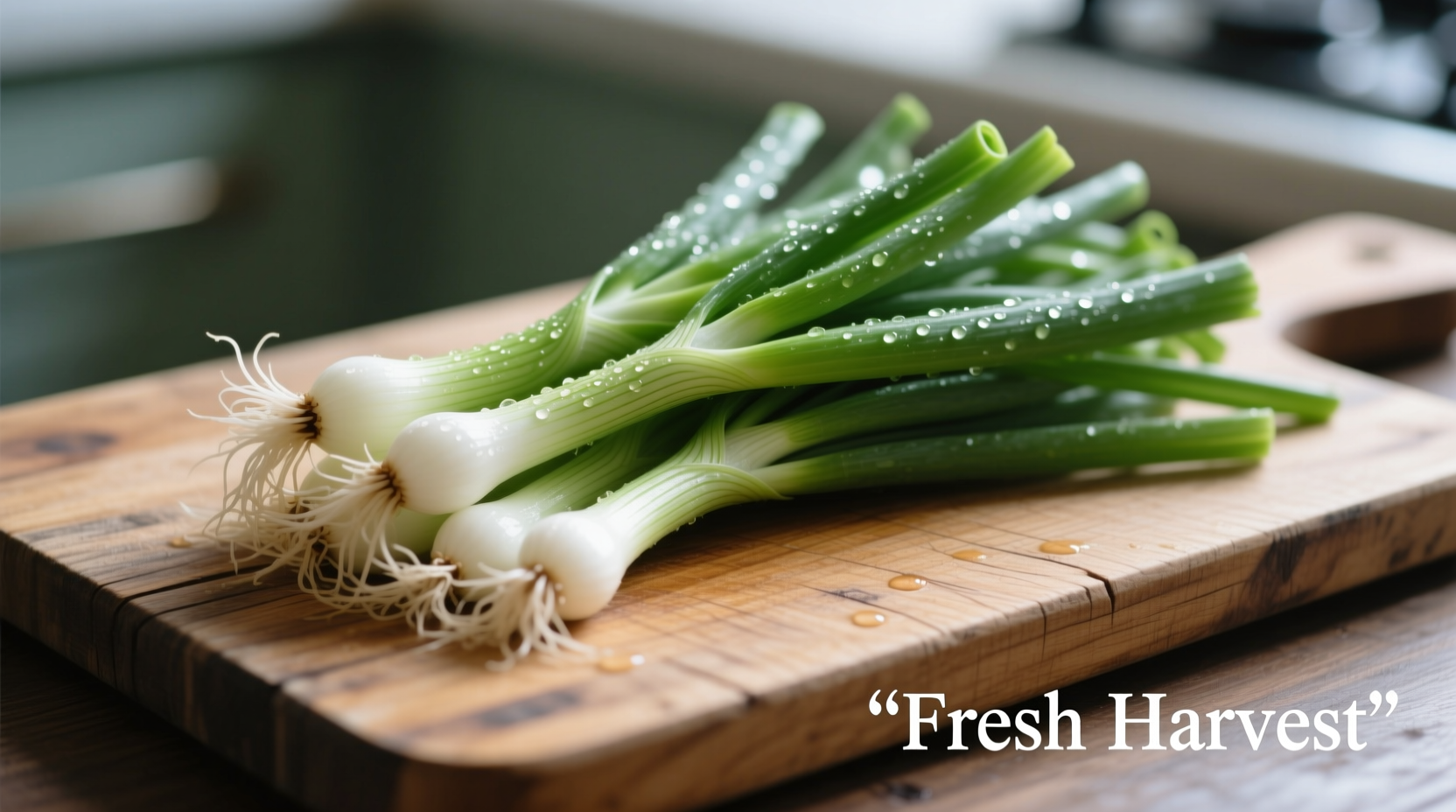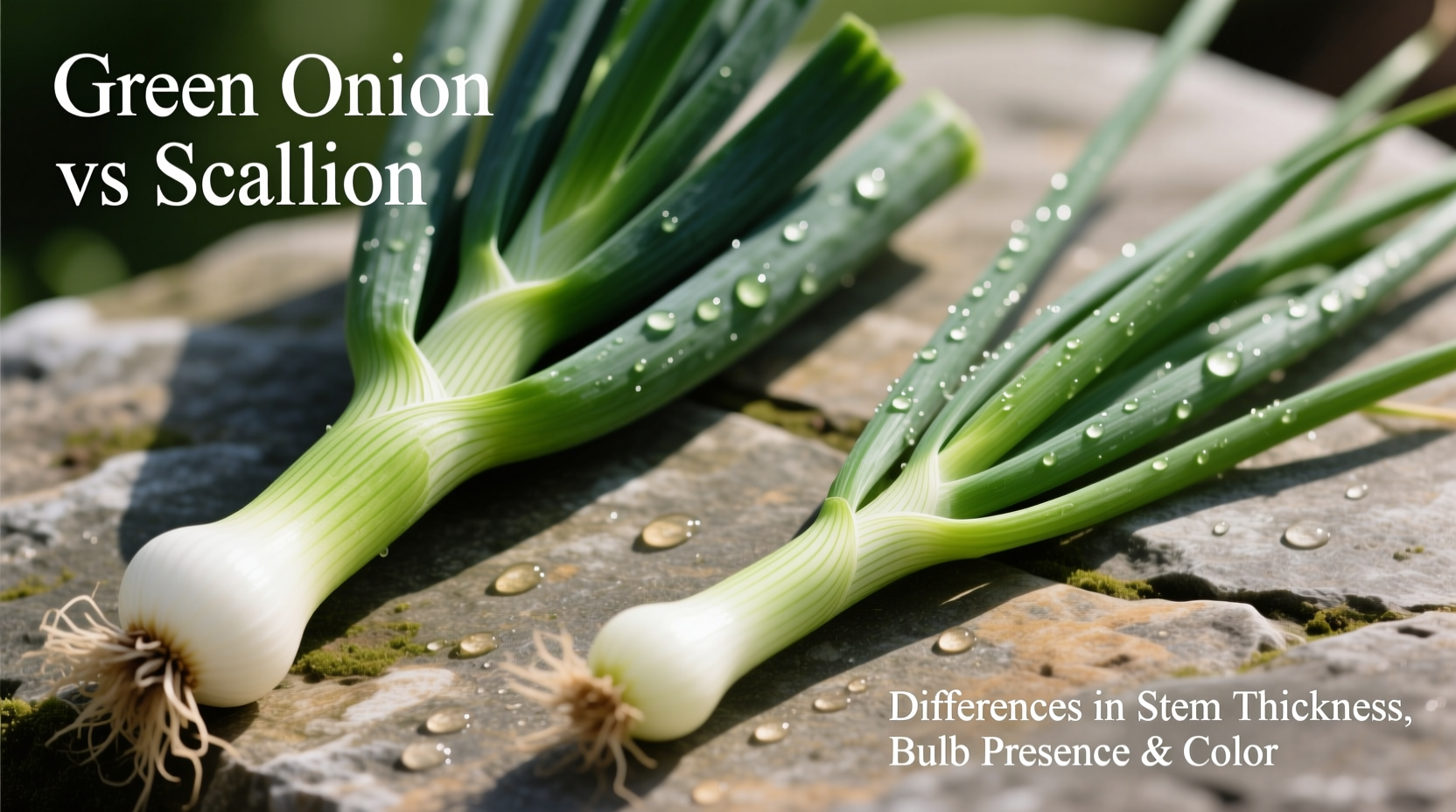Green onions and scallions are the exact same vegetable—there is no botanical difference between them. The varying terms stem from regional naming preferences in North America, not from any actual distinction in the plant itself.
Confused about whether green onions and scallions are different ingredients? You're not alone. This common kitchen conundrum has puzzled home cooks and professional chefs alike. Let's cut through the confusion with definitive clarity: green onions and scallions refer to the identical vegetable—Allium fistulosum or sometimes young Allium cepa harvested before bulb development. The terminology difference exists purely in regional language preferences, not in the produce section.
Why Two Names for One Vegetable?
The dual terminology primarily reflects North American regional preferences rather than botanical reality. In many parts of the United States, particularly the Northeast and Midwest, "scallion" is the preferred term. Meanwhile, "green onion" dominates in Western states and Canada. This linguistic divide has created unnecessary confusion in recipes and grocery shopping.
| Term | Primary Regions of Use | Botanical Accuracy |
|---|---|---|
| Scallion | Northeastern and Midwestern US | Correct for Allium fistulosum |
| Green Onion | Western US, Canada | Descriptive but not botanical term |
| Spring Onion | UK, Australia, South Africa | Often refers to slightly more mature bulbs |
Visual Identification Guide
Whether labeled green onions or scallions, look for these identifying characteristics:
- Slender white base that hasn't developed into a substantial bulb
- Vibrant green hollow stalks that are crisp and firm
- Minimal bulb development (less than 1 inch in diameter)
- Mild onion flavor throughout both white and green portions

Common Misconceptions Clarified
Several allium varieties often get confused with green onions/scallions. Understanding these distinctions prevents recipe disasters:
Green Onions/Scallions vs. Shallots
Shallots (Allium cepa var. aggregatum) are completely different. They grow in clusters like garlic, have a coppery skin, and offer a delicate, sweet flavor with subtle garlic notes. Unlike scallions, shallots develop substantial bulbs and lack prominent green stalks.
Green Onions/Scallions vs. Chives
Chives (Allium schoenoprasum) are a separate allium species with hollow, grass-like green stalks but no white base. They have a much milder flavor and are typically used as a garnish rather than a cooking ingredient.
Culinary Applications and Substitutions
Understanding that green onions and scallions are identical means you can use them interchangeably in any recipe. Their dual-textured nature provides culinary versatility:
White Portion Uses
The white end offers a more pronounced onion flavor, making it ideal for:
- Sautéing as an aromatic base
- Adding to stir-fries during early cooking stages
- Creating flavorful stocks and broths
Green Portion Uses
The green stalks provide mild onion flavor and visual appeal:
- Garnishing finished dishes
- Adding to salads raw
- Blending into sauces and dips
- Chopping for omelets added at the end of cooking
Regional Terminology Variations
The naming confusion extends beyond North America. In the United Kingdom and Australia, "spring onions" typically refers to slightly more mature specimens with small developed bulbs. True scallions (without bulb development) are less common in these regions. This contextual boundary matters when following international recipes—always check whether the recipe expects bulb development.
According to the USDA National Nutrient Database, green onions/scallions provide significant vitamin K (207% of daily value per 100g), vitamin C (20% DV), and folate. Their nutritional profile remains identical regardless of which name appears on the label.
Shopping and Storage Tips
When selecting what your market calls green onions or scallions, look for:
- Crisp, bright green stalks without yellowing
- Firm white bases without sliminess
- No flowering at the tips (indicates age)
Store them wrapped in a damp paper towel inside a plastic bag in your refrigerator's crisper drawer. Properly stored, they'll maintain freshness for 7-10 days. For longer storage, freeze chopped scallions in ice cube trays with water or oil.
When Terminology Might Matter Slightly
While green onions and scallions are botanically identical, some specialty growers might use the terms to indicate slight maturity differences. A "scallion" might occasionally refer to specimens harvested slightly earlier with less developed white bases. However, this distinction is inconsistent across suppliers and shouldn't affect your cooking—treat them as completely interchangeable.











 浙公网安备
33010002000092号
浙公网安备
33010002000092号 浙B2-20120091-4
浙B2-20120091-4